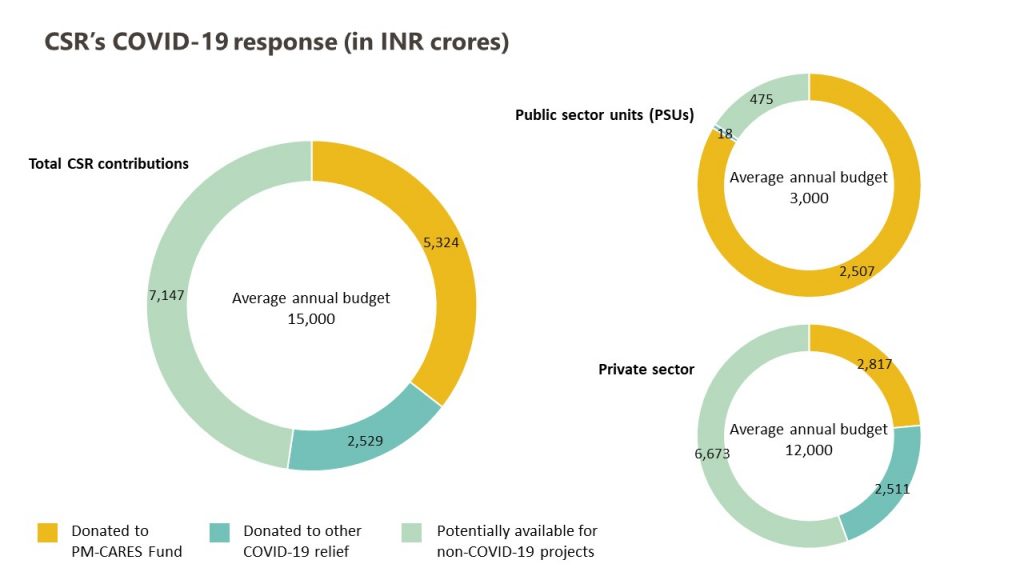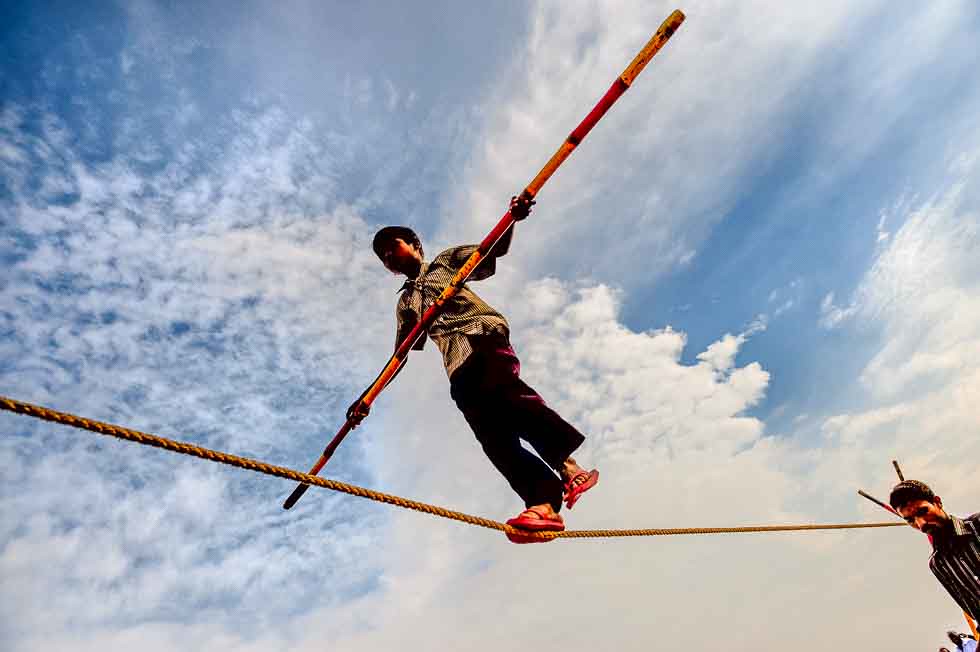As both the public and private sectors struggle to cope with the economic fallout from COVID-19, one thing is clear: The CSR pie is shrinking. With more than half of CSR spends being directed towards the PM-CARES Fund and other COVID-19 relief efforts, it also appears that CSR is unlikely to fund new grantees in FY 2020-21.
What does this mean for nonprofits, who are also in crisis mode post-COVID-19 and rely heavily on CSR funding? To help answer this question and get a better sense of CSR priorities, Sattva’s India Data Insights report on CSR’s COVID-19 Response and Outlook for FY 2020-21 lays out CSR spends by industry, geography, and modes of implementation. Here are their findings:
A closer look at the slices of the pie
The annual average CSR budget in India is roughly INR 15,000 crore, of which the top 300 companies contribute two-thirds—INR 10,000 crore. From the CSR announcements made by these companies, in addition to collaborative contributions, it can be seen that more than half the annual CSR budget—INR 7,863 crore—has been allocated towards COVID-19 relief measures. A large proportion of this amount has been allocated towards the PM-CARES Fund, specifically, INR 5,324 crore.
Public sector units (PSUs) that collectively have an average annual CSR budget of INR 3,000 crore have donated INR 2,507 crore to PM-CARES, and private companies that typically have an average annual CSR budget of INR 12,000 crore have donated around INR 2,817 crore to PM-CARES.
Historically, the PM National Relief Fund has received INR 200 crore annually though CSR contributions. The PM-CARES Fund has managed to garner more than 25 times this amount in a much shorter time frame.
The PM-CARES Fund is rife with issues pertaining to transparency and accountability.
The fund is rife with issues pertaining to transparency and accountability, along with a general lack of clarity over the control and use of money donated to it. After a law student from Bangalore filed an RTI application seeking details about the fund, it’s trust deed, and government orders related to its creation and functioning, the Prime Minister announced that the fund is not a ‘public authority’ and does not fall under the ambit of the RTI Act, and proceeded to appoint an ‘independent auditor’ to monitor the fund.
So, while CSR funds that can be channelled towards nonprofits do remain, PM-CARES has funnelled away a large amount of capital away from nonprofits.
Related article: Six things to consider about PM-CARES
A closer look at the financiers
Private industrial conglomerates have committed the largest amount of money to COVID-19 relief, with INR 1,830 crore donated to PM-CARES and INR 1,300 crore committed to other relief measures.
The oil, gas, petroleum, and energy sectors (largely dominated by PSUs) come next, having donated INR 1,600 crore to PM-CARES and committed INR 18 crore to other COVID-19 provisions. The banking (largely private) and mining (largely public) sectors have near identical contributions of around INR 530 crore to PM-CARES and INR 100 crore to other relief measures respectively.
It can be seen that while the energy, banking, mining, manufacturing, telecom, real estate, and other sectors are very heavily skewed towards contributing more to PM-CARES, the automobile, IT, FMCG, and pharmaceutical sectors have committed more towards other relief efforts.
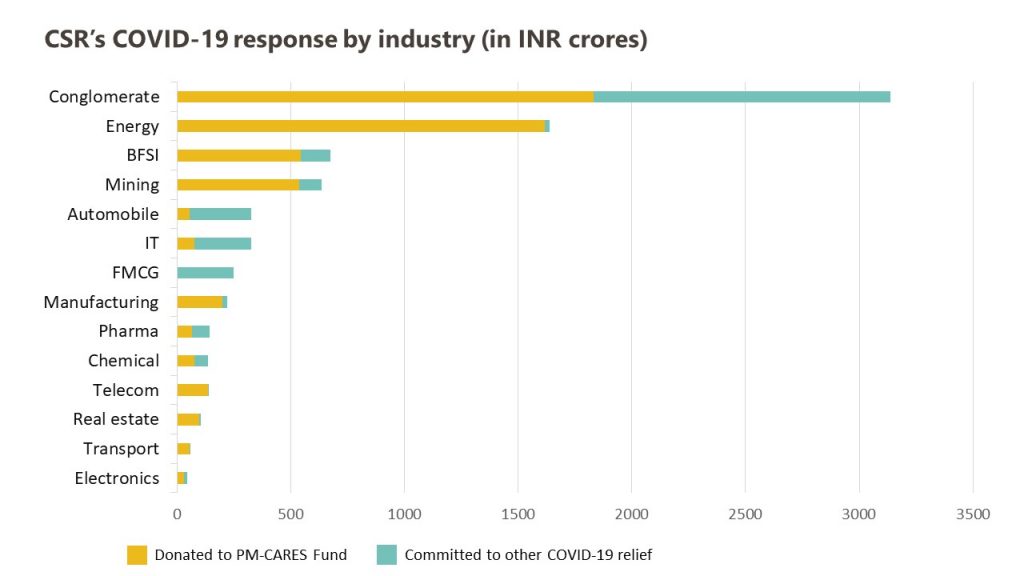
Source: Sattva’s COVID-19 CSR Outlook for 2020-21
A closer look at where the money is going
Geographically, the central and eastern parts of India receive less than 10 percent of CSR spends, combined. Their biggest contributors are PSUs in the mining, energy, oil, and gas industries. Since these companies have allocated the majority of their CSR spends towards COVID-19 relief, their regular CSR activities are at risk.
Geographically, the central and eastern parts of India receive less than 10 percent of CSR spends, combined.
These regions receive significantly less than the western and southern regions of India, and with their key CSR contributors having committed funds elsewhere, development work in these chronically under-funded regions stands to receive even less than usual.
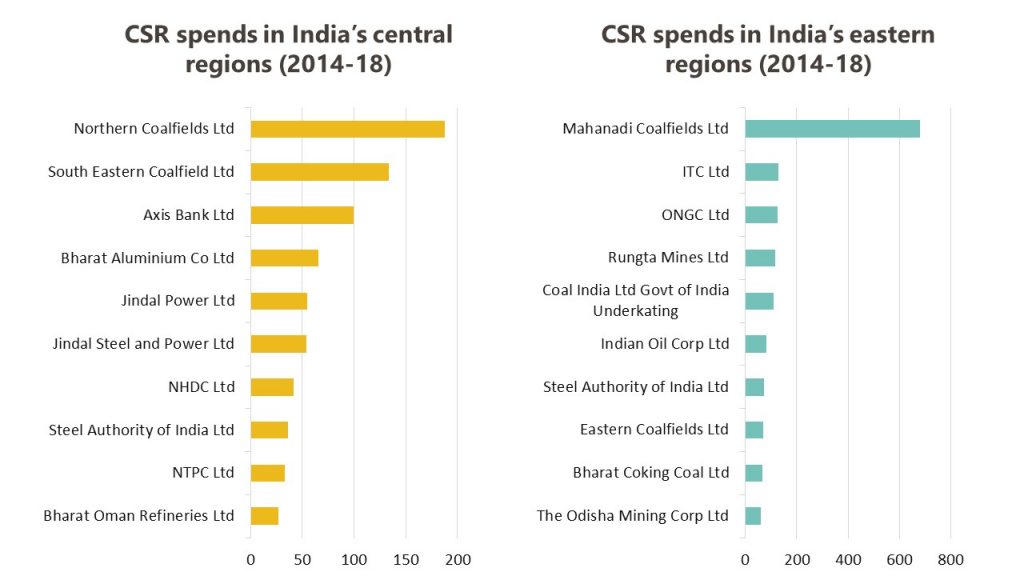
Source: Sattva’s COVID-19 CSR Outlook for 2020-21
Within these geographies, the largest amount of CSR funding traditionally goes towards education, followed by rural development projects. In the central region of India, healthcare comes third after education and rural development projects, and fourth in the eastern region, with poverty, hunger, and nutrition projects coming third.
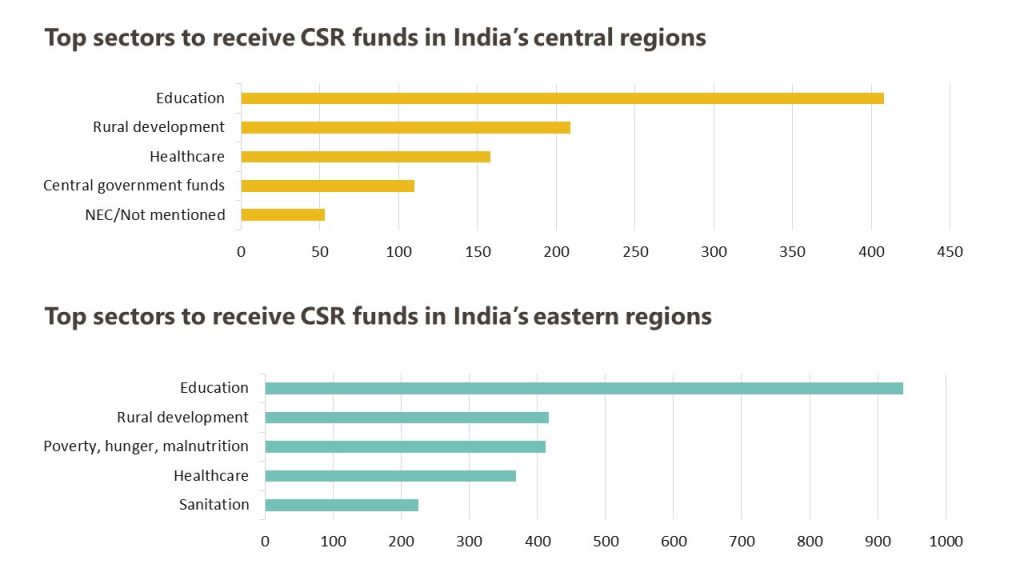
Source: Sattva’s COVID-19 CSR Outlook for 2020-21
A closer look at how the money is channelled
Usually, about 50 percent of CSR spends, or around INR 7,500 crore, is deployed through implementation agencies—independent nonprofits, trusts, societies, or those created by the company itself.
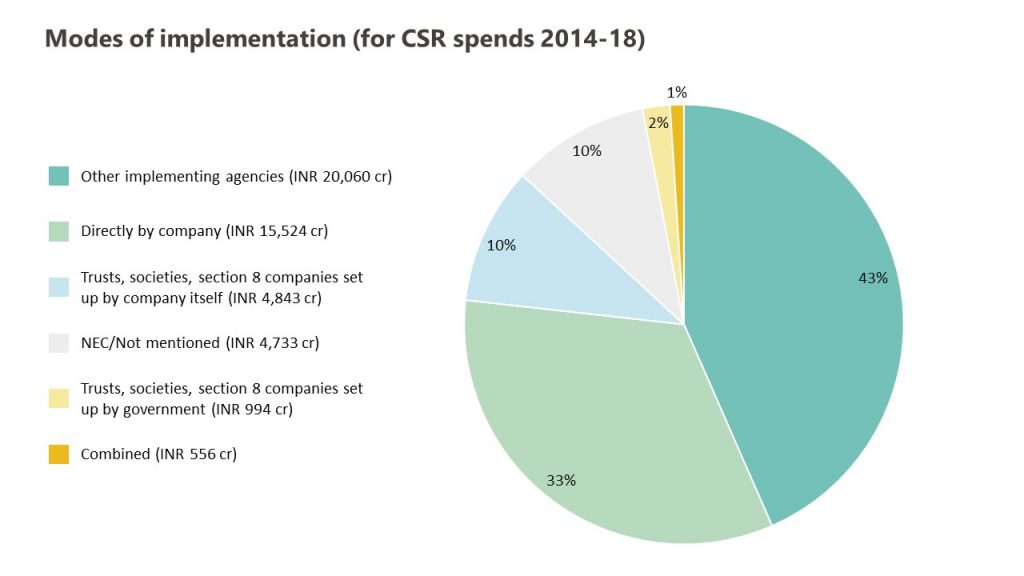
Source: Sattva’s COVID-19 CSR Outlook for 2020-21
Due to the crisis caused by the pandemic, only an estimated INR 3,500-4,000 crore may remain available for regular CSR projects, as compared to the INR 7,500 crore previously. Nonprofits that rely on CSR funding for sustenance are in a difficult situation, and will need to adapt to this changing CSR landscape.
—
Know more
- Learn more about PM-CARES, its issues with transparency, and why it should not be audited by independent auditors.
- Read this circular by the Ministry of Corporate Affairs, answering frequently asked questions about what qualifies as CSR expenditure during COVID-19.
- Explore these five measures that nonprofits can take to ensure financial sustainability during COVID-19.
Do more
- Reach out to covid19response@sattva.co.in to learn more about how nonprofits can adapt programmes and pivot to emerging needs on the ground due to COVID-19.
